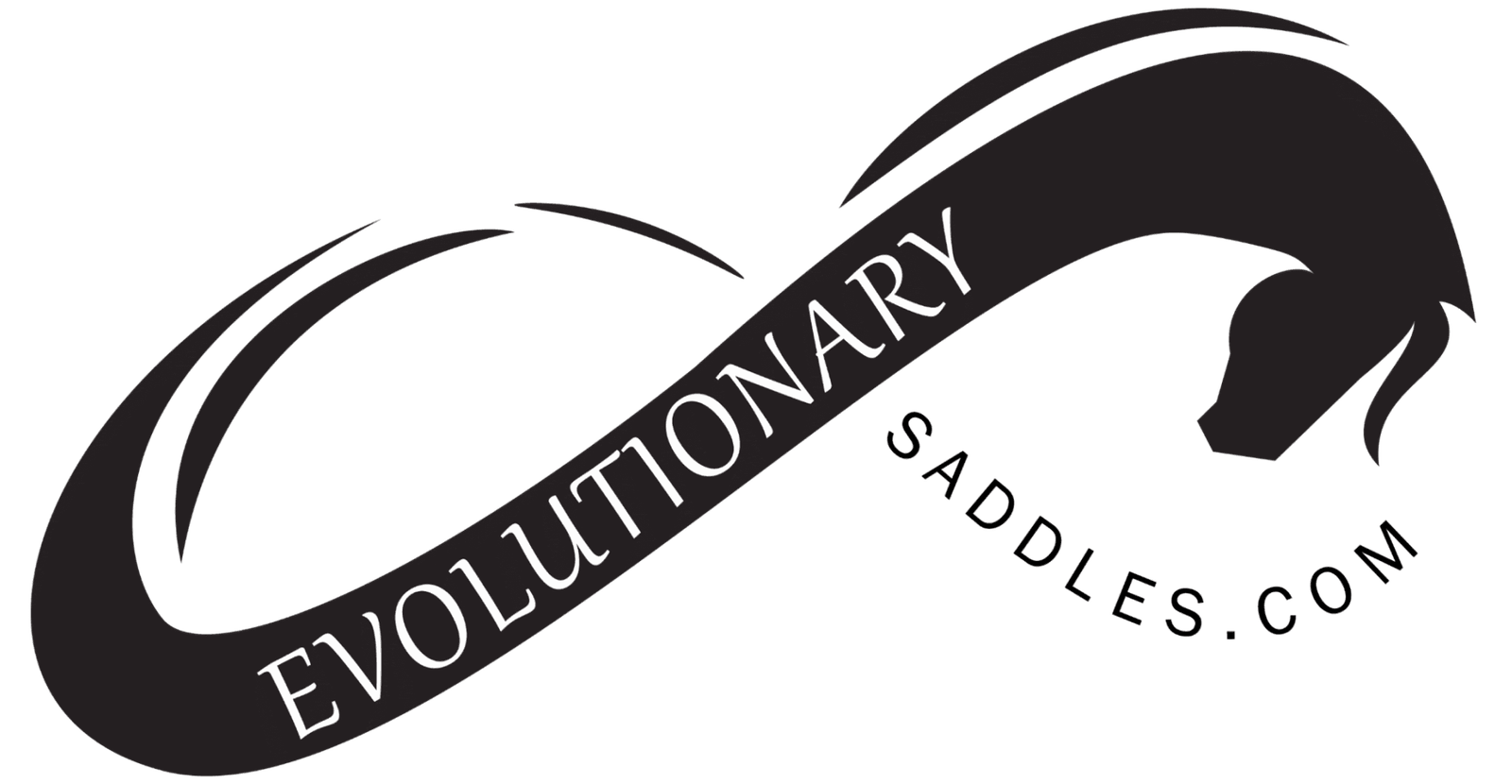
On the Endurance Tree Mixed with Western Charm
Designed, Constructed & Article Written by Tracy P. (Apprentice)
This saddle is named after a very long time friend and leatherworker who passed away early in 2023.
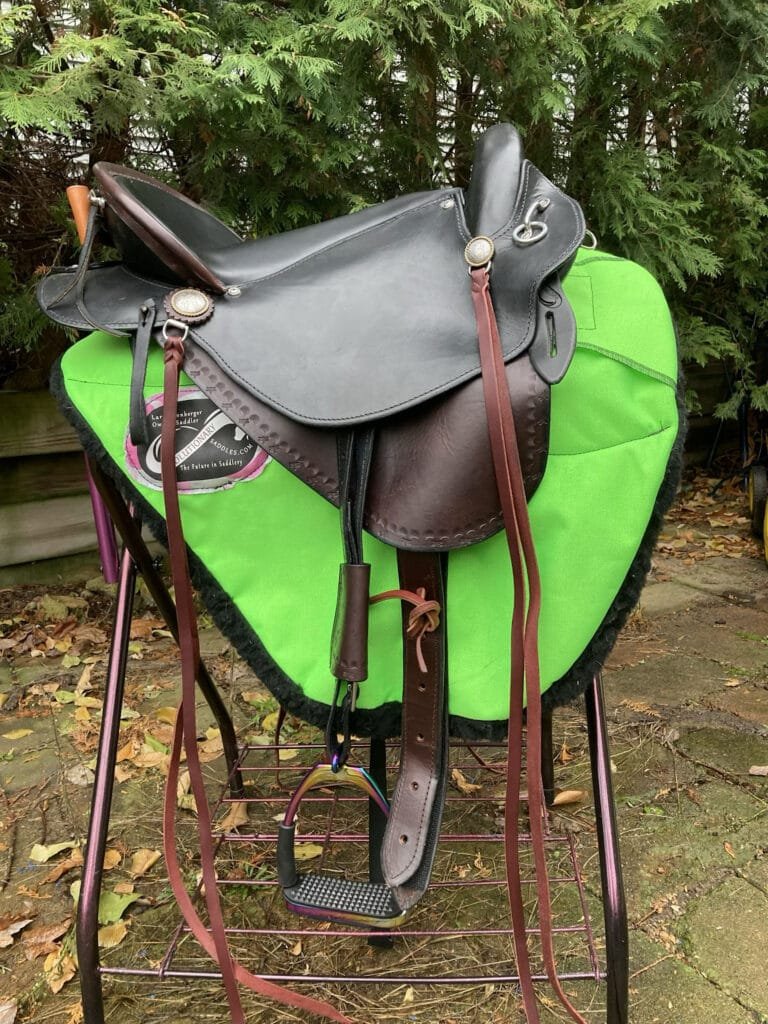

Double T Leather Works
Double T Leather Works was owned and operated by Kerry Wilcox, I met him while doing historical re-enactments in high school. Our lives took us in many directions through the years but we remained friends throughout. So, when I started working for Lara in the fall of 2022, Kerry was happy to give both of us tips and pointers. Sharing with us what he had learned in his 20+ years of leather working, saddle building and repair.
When Kerry lived in the Dakotas he even met Cathy who owned Hillview Farms and manufactured Evolutionary Saddles. When I poorly tried to explain Evolutionary Saddles to him, after working with Lara for all of a day. He chuckled and reminded me I had a lot to learn but I’d get there. He was so very correct in that assessment!
Kerry was a “traditional” leather worker. Everything he did was done with the tools as it had always been done. So, when I’d join him to pick his brain on how to do something, then grab the wrong tool he’d correct me. Then we would have a discussion on tool usage and why do I have to use something that doesn’t necessarily work for me. There are still tools that he mastered that some day I’ll understand the appeal.
Sharing Philosophies
One of the discussions we had many times was why conventional saddles were so heavy and not always comfortable for the rider or horse. Kerry was a conventional saddle guy due to living out west and dealing with the cowboys and their saddles. Either type of saddle, conventional or panel, we agreed had to be a good product that fit the job it was designed for. Additionally, it needed to be made of quality materials and perform as the customer wanted.
Opportunity Strikes!
So when Lara approached me about making my own saddle, I started thinking about what I wanted. This would need to be my forever saddle. Knowing it would fit whatever horse I eventually purchased, the sky was my limit for me to design it. I’m not sure Lara expected a complete custom design as my first build.
After Kerry passed away I knew I wanted to build a saddle that showed off the skills I learned and be a saddle he would be impressed with, both in function and quality. So I have dedicated it to him by designing it with him in mind and naming it after him. The Kerry became a reality.

Kerry’s absolute favorite standard tooling pattern that he put on all of his leather work was the sunburst. Keeping this in mind I wanted to be sure to add it to my saddle. However, my love of dragonflies also needed to be incorporated. That is how the border tooling on the rigging cover came to be.

Kerry did amazing carved figure tooling on many things and I was just starting to learn but being an endurance western hybrid type saddle it had to have some carving. The frog, where the rear jockeys meet, was a perfect place to add a carving, so I needed to design something.
Our History
I met Kerry 30 years ago at a reenactment event, I was introduced to him as Tripping Turkey. There’s a story behind his camp name, as there always is, but it took several years for me to hear the namesake version.
Tripping Turkey is where the TT in Double T Leather Works comes from. Because of this I wanted a turkey feather on my saddle. Feathers are one of the more difficult things to carve, so why not start there. The frog’s shape is a dragonfly, incorporating something from both of us again. The colored spots add the color and flash, Kerry and I like blue, green and pink, together and seperate.
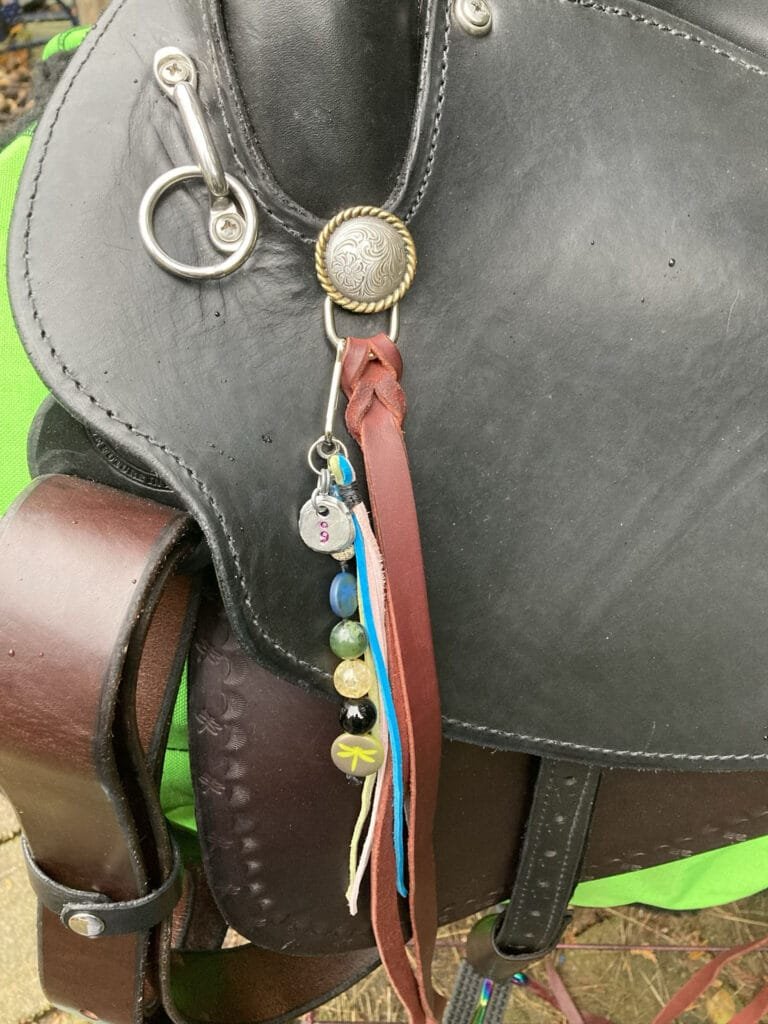
Strings and conchos are favored on western saddles, they add an individual rider’s personality. I found when going through Kerry’s leather shop stock using the conchos and strings that he had. Allowing me to customizing my saddle and as another tribute to him.
New Skills & New Accomplishments

The Kerry built with black and havana brown leather opens up matching tack options. Using metallic green leather I had on hand, I created, my first, inlay breast collar with tooled wither strap and tugs. Paired with Kerry’s handmade bridles with hand set Swarovski crystals in addition to one of his handmade leather barrel reins completed my “Black set”
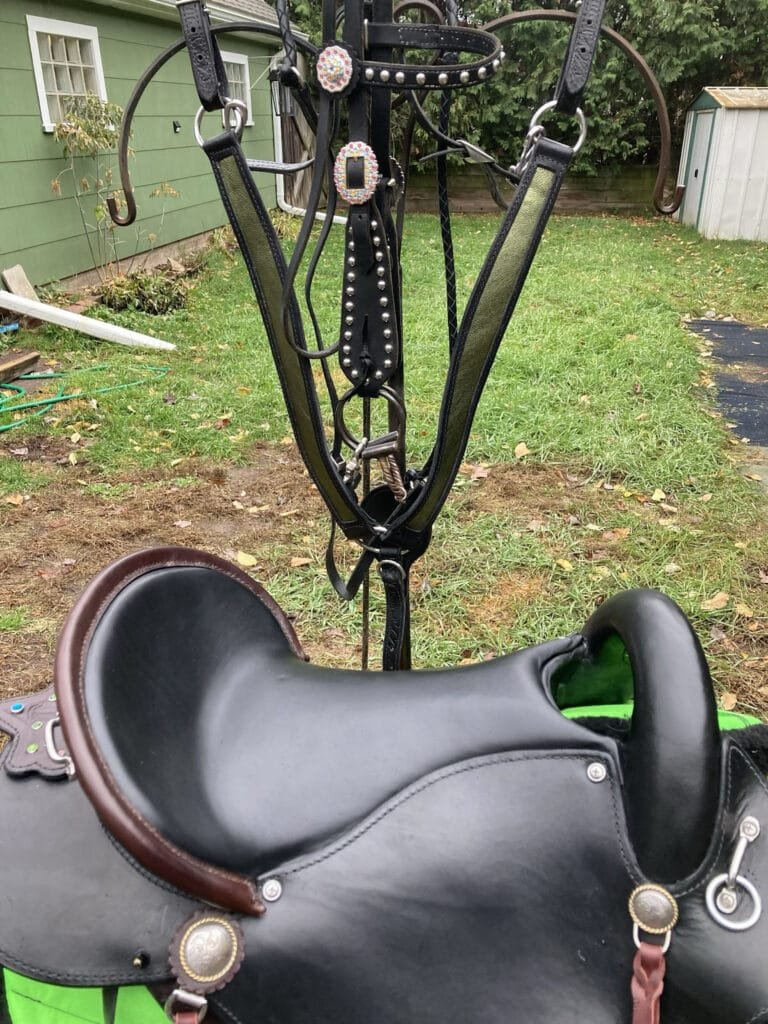
My “Brown set” is one of Kerry’s breast collars and I already had a brown bridle with split reins!

Finishing Touches
Either set looks great with the saddle!
To keep everything looking nice and having it all together the billet, stirrups, and strings all get held up by the keeper strap on the back of the saddle. An alternative to being pulled up on the leathers, scratching the saddle or banging me in the legs when I move it. The stirrup keepers that are on most Evolutionary Saddles, is a design that is ingenious! Makes me wonder why more saddle companies don’t do this!
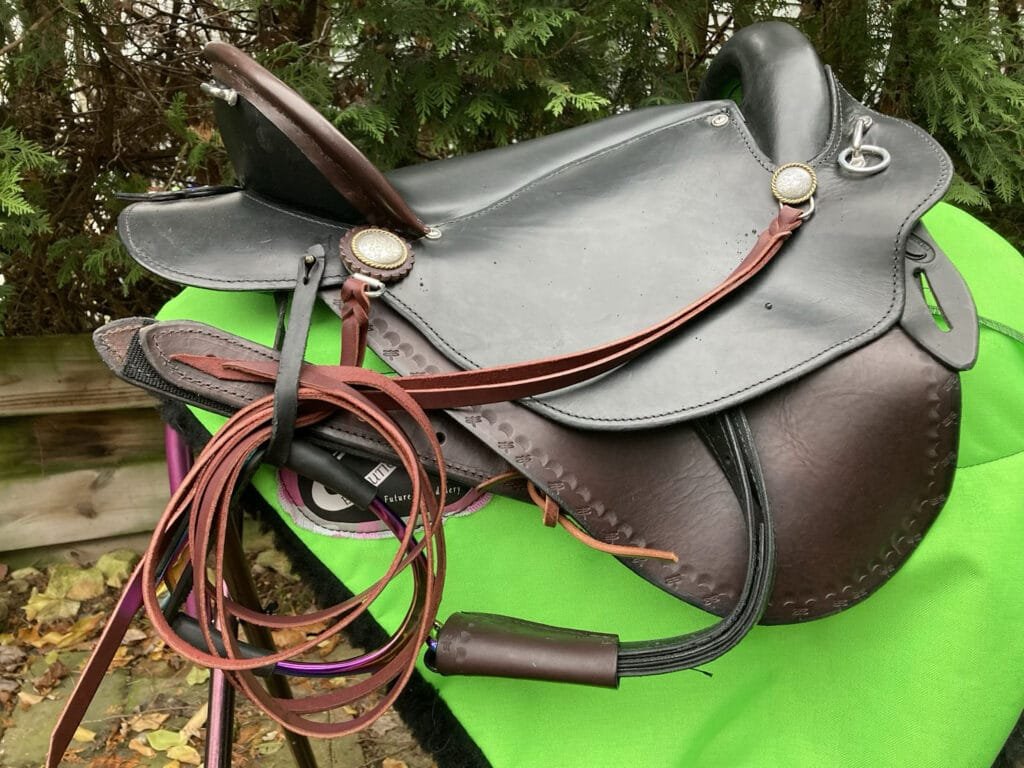
I added an extra removable keeper strap for my latigo to help keep it from getting in the way.

All Set for Travel!
Since I don’t have a tack room to keep my stuff, my dust cover is essential to the well being of my saddle staying beautiful. Once everything is tucked in, all of the leather is protected. However, having 2 sets of tack proved to be a problem with how to keep it protected and together!

I came up with a matching dust cover for each set that makes it grab and go! My black tack is in the pink bag and the brown set is in the black bag.
These covers are based on an extra large carabiner clip that opens inside the bag. I clip the girth strap clip to the D ring the tugs are attached too and then run the carabiner through both D rings. For the bridle, I clip the top of the ear band and the throat latch to the carabiner and then give the reins one turn so they form an X and clip them in. Fold the bag over the clip, tuck everything up inside and snug the draw string. Everything is together and ready to go!

Because I take my saddle everywhere it seems, I have an “in the car” saddle rack. It fits in my Ford Focus with or without the seats down. This is also where the amazing keeper strap Lara developed comes in handy. Once the dust cover is on, the only thing that touches the bottom of the saddle stand is the Sox! This makes it super easy to get my saddle in and out.
Didn’t Stop There
Yes, I did customize my saddle stand! It’s pink! The black strap keeps it held together when transporting it.

